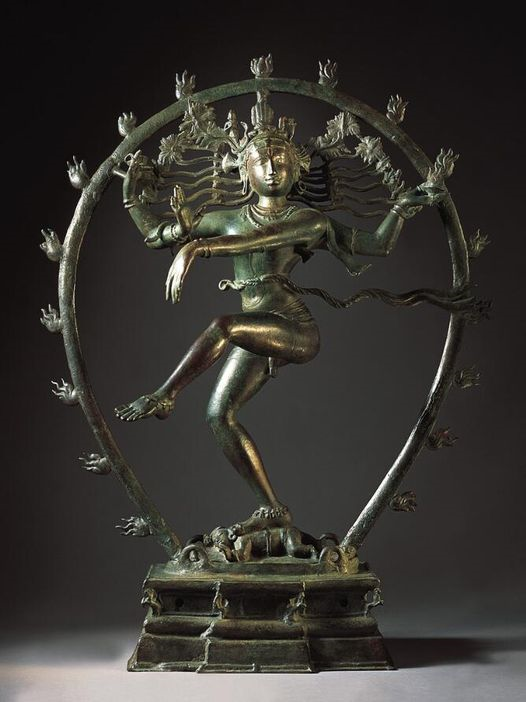ARTICLES
Stolen Art-Who do we blame?
Deepak Shimkhada, Ph.D.
For this article I have no picture.
In 1974, during my time as a graduate student of art history at the University of Southern California, an American approached me with a stunning Nepali paubha painting for appraisal. The individual in question will remain unnamed. This was an exciting opportunity for me, and I took it as a challenge to appraise a work of art. The paubha, which was in excellent condition, was painted on cloth and measured approximately 6 feet long. However, the cloth at the edges had some wear and tear, which may have been caused by occasional display during some festivals in a Buddhist vihara. I made that assumption based on the inscription below each scene. The man obtained the painting in Kathmandu while he was a Peace Corps Volunteer there.
Unfortunately, the man didn’t give me enough time to do the necessary research to arrive at a satisfactory identification. This was during the 1970s, a time when the internet didn’t exist. Since he was more interested in the monetary value of the painting than the subject matter, I offered to take him to the Los Angeles County Museum of Art, where Dr. Pratapaditya Pal worked as the curator of Himalayan art. When Dr. Pal looked at the painting, his eyes brightened, and he offered the man $18,000 to sell the painting to the museum. However, the man refused to sell it.
The following day, Dr. Pal confided in me that the painting was worth close to $100,000 on the market and was a gem. This is just one instance. When I asked the man how he obtained the painting and how much he paid for it, his response was unbelievable.
He paid $100 to a fellow who wanted to purchase a used motorbike. Whether the painting was a family heirloom of the fellow who sold him or a property of a Buddhist vihara is unknown. In either case, judging its quality and cultural significance, it was a gem of the paubha painting, and Nepal lost a piece of art of great value for a mere $100. More than the monetary value, a rich cultural heritage was taken out of the country.
Who is to blame: the seller or the buyer?
Problems of Repatriation of Stolen Art
Deepak Shimkhada, Ph.D.
The famous bronze statue of Shiva Nataraja from South India on display at the Norton Simon Museum in Pasadena was determined to be stolen. After a lengthy court battle between India and the museum, the statue was returned to India in 1976. Forty-seven years have passed, but where is the statue now? I want to know because no one has seen it. It has gone underground from the view of the devotees and the admirers. But why? Today it is not actively worshipped in a temple as it was originally intended to or kept in a museum as it was viewed in the Norton Simon Museum in Pasadena, California. Hundreds of thousands of viewers over a period of three years when it was on display at the museum must have seen it, admired it and best of all learned the myth, religion, and cultural significance it held for the Hindus.
In its lawsuit Indian Government asked for damages for infliction of mental suffering. It argued that this was caused by the fact that the retention of the statue by the defendants constituted a denial of the Indian people’s right of religion and that the Nataraja idol, which was regarded as divine or made by God, was wrongfully detained. According to Indian law, in effect, the idol, as installed in a special shrine and worshipped, was considered as a legal entity capable of suing and being sued, not a mere movable property. Based on this argument the Indian government effectively repatriated the statue because it was essentially a religious relic. If that was a religious relic, why is it not enshrined in a temple?

After all that wrangling that went behind the scenes claiming the statue, it was finally returned, but people—both devotees and the general mass—don’t know the whereabouts of the statue. Then, what’s the purpose of reclaiming it, or repatriating it if it doesn’t serve the people for whom it was made? Yes, it is true that a cultural artifact should stay in the country in which it was made. A work of art is the country’s cultural heritage. But after repatriation, if it doesn’t serve the same purpose for which it was made, then it defeats the purpose of repatriation.
I have plenty of cases about Nepal. Nepal is no different. All the repatriated works of art, except for a few, have disappeared. If they haven’t walked the back door, they are kept in a storage with no climate control. Many objects, especially paintings, are rotting there. I can vouch for the dilapidated condition of artworks because I have seen them with my own eyes. As I said, art is a nation’s pride and cultural heritage and they should be protected, conserved and preserved as the nation’s treasure. We can’t bring them back once they are destroyed. Now is the time to act.
Stolen Image-Dallas Museum
Unveiling the Motivations behind Art Theft and Trafficking:
Seeking a Cure
By Professor Deepak Shimkhada
Introduction:
Art theft and trafficking have plagued the cultural world for centuries, posing a significant challenge to the preservation of humanity’s artistic heritage. The motivations behind these illicit activities are diverse, driven by a combination of financial gain, personal prestige, and the insatiable demand for valuable and culturally significant artifacts. This essay explores the driving forces behind art theft and trafficking and suggests potential measures to curb and eliminate these lucrative but destructive practices.
Motivations behind Art Theft and Trafficking:
Financial Gain:
One of the primary motivations behind art theft is the potential for substantial financial profits. Stolen artworks can fetch exorbitant prices in underground markets, where they are sold to unscrupulous collectors, organized crime syndicates, or private collectors seeking exclusive masterpieces. High-value artworks by renowned artists become targets due to their potential for immense monetary returns.
Prestige and Power:
The allure of owning rare and valuable artworks drives individuals, including private collectors and criminals, to engage in art theft and trafficking. Possessing stolen masterpieces can provide a sense of prestige, social status, and power. Artworks serve as status symbols and can elevate the reputation of collectors, even if acquired through illegal means.
Black Market Demand:
A clandestine global market exists for stolen artworks, fueled by collectors and enthusiasts seeking to possess unique pieces outside the legitimate art market. Underground networks facilitate the sale and distribution of stolen art, capitalizing on the demand for works that cannot be openly traded due to their illegitimate origins. This demand perpetuates the cycle of theft and trafficking.
Cultural Heritage and National Identity:
Some art thefts target works of significant cultural or historical value. These thefts are often driven by a desire to reclaim a nation’s cultural heritage, correct historical injustices, or assert national identity. Stolen artworks may be seen as symbols of cultural superiority and political domination, motivating individuals or groups to steal and reclaim them.
Measures to Curb and Stop Art Theft and Trafficking:
Enhanced Security and Vigilance: Museums, galleries, and private collectors should invest in advanced security systems, including surveillance technology, alarms, and secure storage facilities, to deter theft and protect valuable artworks. Cooperation between institutions, sharing information and best practices, can contribute to a more robust security infrastructure.
International Collaboration and Legislation:
Strengthening international cooperation among law enforcement agencies, art professionals, and governments is crucial. Improved sharing of intelligence coordinated efforts to track stolen artworks, and the implementation of stringent legislation can aid in combating art theft and disrupting the illicit trade.
Public Awareness and Education:
Raising awareness about the importance of cultural heritage and the devastating impact of art theft can create a more vigilant society. Public education campaigns, exhibitions, and media initiatives can inform the public about the significance of stolen artworks, encouraging them to report suspicious activities and contribute to their recovery.
Digital Documentation and Provenance Research:
Establishing comprehensive digital databases and platforms that catalog artworks and their provenance history can be instrumental in verifying the authenticity of pieces. Advanced technologies, such as blockchain, can ensure transparent and secure records, deterring potential buyers of stolen art and facilitating the identification of stolen pieces.
Strengthening Legal Market Channels:
Encouraging transparency and accountability within the legitimate art market can reduce the demand for stolen artworks. Implementing stricter regulations, requiring detailed documentation and provenance verification for transactions, can discourage the acquisition of illicitly obtained pieces.
Conclusion:
Art theft and trafficking remain persistent threats to cultural heritage and the art world as a whole. Combating these crimes requires a multi-faceted approach that addresses the motivations behind them while strengthening security measures, fostering international collaboration, and raising public awareness.

Stolen Artifact: Necklace of Kumari gifted by King Pratapamalla

Numerous Nepali works of art are currently housed in museums worldwide or owned by private collectors. While most were acquired through legal means, some were stolen or sold by the owners themselves, driven by either greed or poor economic conditions. For instance, the Chicago Art Institute houses, among others, two Nepali artworks that have been removed from display due to concerns of their stolen status – the Kumari necklace that once adorned the image of Taleju and a bronze Buddha statue. The necklace, in particular, raises questions about how it was stolen since the temple where it was housed is only open during the Nava Durga puja in Dasain. Moreover, how did it end up in Chicago? Will the objects ever be returned to their original location if the museum decides to repatriate them to Nepal?
According to Hindu-Buddhist beliefs, an object that crosses the Seven Seas becomes defiled and impure, losing its efficacy and power. This raises the question of whether it is still desirable to have the artwork returned in its impure state.
